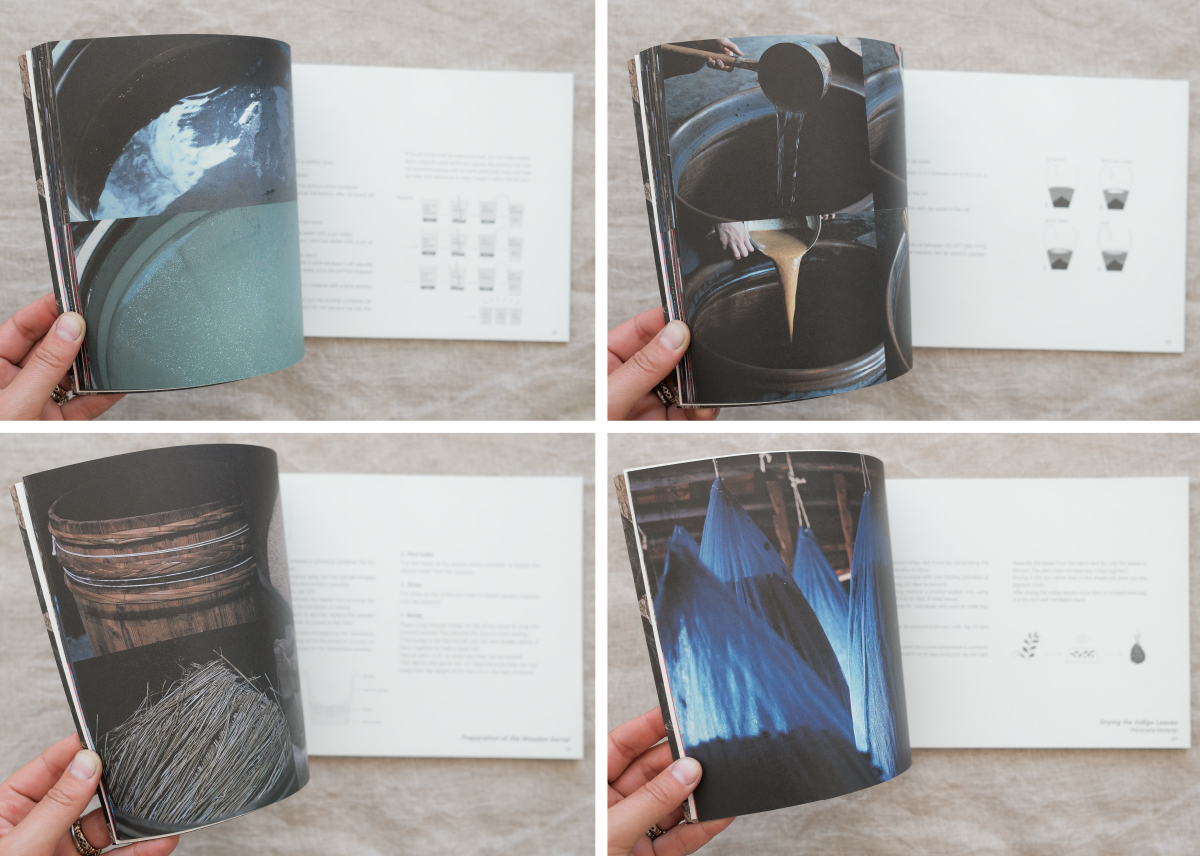The Way of Indigo — by Takayuki Ishii – A Rare Book and A Blue Harvest
A Numbered, Limited Edition Book.
Indigo and Sukomo
For artisans who live in temperate regions. Persicaria tinctoria is the plant that holds the greatest promise of giving indigo blue. Traditional Japanese extraction techniques, known as Sukomo, have historically been practiced using a harvest of hundreds of kilos of persicaria.
Artisan Takayuki Ishii has spent over ten years experimenting and refining an alternative extraction method which can be accomplished with a modest harvest of only 7 kilos of dried leaves. In order to share this technique and the wonder of Sukomo, Takayuki Ishii has published this beautiful guide.
"The Way of Indigo" contains evocative photography of the process, as well as clear diagrams and instructive text.
As Takayuki Ishii says:
"Once you are introduced to the world of natural Sukumo indigo dyeing, I guarantee that you will not want to dye with indigo using any other method."
"I hope your way of indigo will be brightly lit.”
The book is 56 pages and approximately 10 x 7 inches. It includes one tipped in sheet of a Sukomo imprint on washi paper with the artisan's mark. This rare book deserves to be on every dyer's bookshelf. These are limited copies remaining of this rare book.
Sometimes, if the conditions are exactly right, persicaria plants betray the blue secret lurking within the leaves.
Maiwa's dried persicaria leaves at the end of the season. The leaves crinkle and rustle as they are taken down and stored for the winter.
Want to know more about the Maiwa Dye Garden?
SCENES FROM THE
MAIWA DYE GARDEN
Maiwa has been growing dye plants for over 25 years. We grow them to understand the nature of each plant, how it transforms light, water, air and soil into a potent source of colour.
Each year we run tests on as many variables as we can. We are looking to study germination rates, best methods for planting and transplanting, soil health, propagation strategies, the influence of growing conditions on the colourant yield strength and quality. We compare varieties and test some common assumptions about growing. We are looking at these on the scale of small growers in order to encourage the use of plant-based colour by artisan dyers.
The dye garden is part of our larger strategy to systematically test recipes for all natural dyes and mordanting techniques on as many fibres as possible. We share the tried and true recipes on our natural dye website (naturaldyes.ca) and we share the principles and fundamentals as free lessons on our teaching platform (maiwa.teachable.com) where we also offer an in-depth learning experience through paid workshops for those studying natural dyes and the textile arts.

To our U.S. customers – don't forget that the exchange rate works in your favour, it's like an extra discount.


















0 comments
We moderate comments to keep posts on-topic, avoid spam, and inappropriate language. Comments should appear within 24 hours.